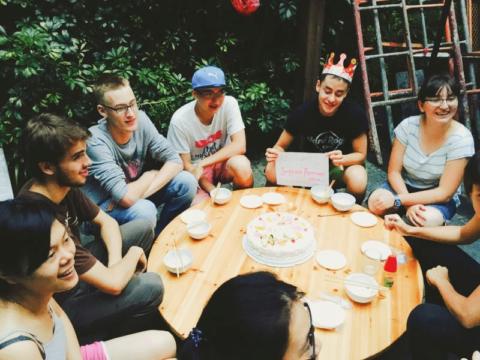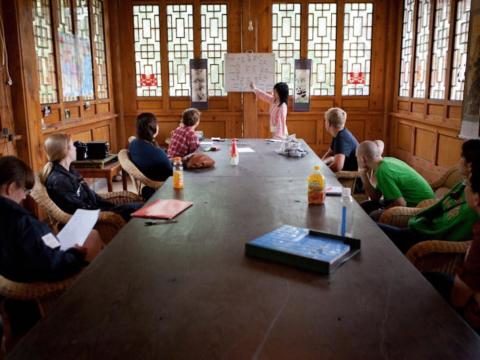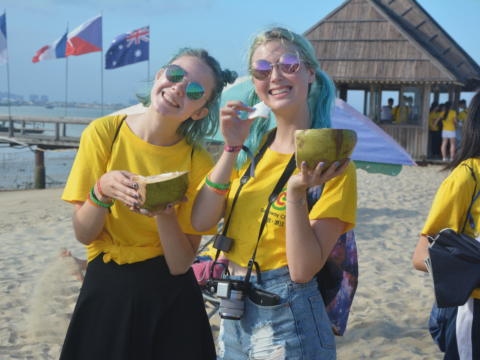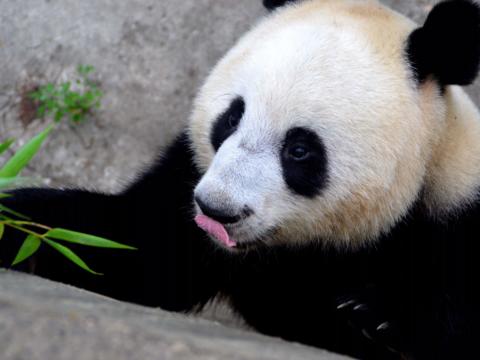Only 420€ per week!
Urban Culture Week
Zhanjiang - China
Kickstart your stay in China with a week full of sightseeing, culture training and exploring of the bustling city of Zhanjiang…bond with your group and make new friends too!
You will begin to understand the Chinese ways of doing things. It is a fun filled week that is dedicated to getting to know China and some of its cultural aspects first hand. You can expect to meet the local people, bond with fellow participants, taste the local cuisine and become familiar with Chinese customs.
Program Description
Whilst it has the longest written history in the world, and despite its staggering economic performance and entry onto the world stage as heralded by the Beijing Olympics, China remains an enigma. Of all Asian countries, it is one of the least understood.
This program will help you to understand their culture and everyday activities and it is the ideal starting point for anyone visiting China.
This program takes you beyond the headlines that appear in the Western press, away from politics, away from the big cities and the normal tourist attractions. During Culture week, you will learn about Chinese culture, get an insight into the language and even learn how to make dumplings!
You will visit Huguang Lake Global Geopark, Cunjin Park, Zhanjiang’s beach and its Chinese University. Moreover, you will get to meet people, learn the basics of the language, and get a first hand understanding of the Chinese way of life.
It is a programme developed and delivered by Chinese people after careful research into what westerners really want to know. You will be with both Chinese and Westerners; discussing cultural differences not in just an academic sense but in a practical reality!
There is only one rule: if you want to know anything – just ask!
Aims & Objectives
- Give you a real insight into authentic Chinese culture
- Get you to feel comfortable in your new surroundings
- Help you learn phrases and understand the culture you will be engaging with
Schedule
Monday
After breakfast, we will have a group meeting and a bus tour of Zhanjiang city, which will get you familiarized with your new surroundings. Afterwards, we’ll head to center for essential shopping, where you’ll be able to exchange money, buy essential things you might need during your stay, purchase a sim card, etc etc…. We will then have a yummy local lunch!
Once back at the accommodation, you will get a Chinese language lesson and you will also learn about the do’s and dont’s in China. After dinner, it’s time to have a welcome party for you!
Tuesday
After breakfast there is a Chinese culture session focusing on Chinese festivals.
In the afternoon we will gather to visit the Huguang Lake Global Geopark. Here you will have a trekking session around the lake, which will take 1.5hours.
During the evening, it’s time to unwind with dinner and a Chinese movie.
Wednesday
It’s do-it-yourself day!
After breakfast, Chinese lesson in the morning, you will learn how to buy and bargain in Chinese, then after lunch, we will go to the Market to buy some food.
A Chinese culture lesson and cooking lesson awaits you in the afternoon and during the evening you can learn how to play Mah-jong or Chinese chess.
Thursday
In the morning, we’ll visit a school/child care center, meet the children and you will try your hand at some teaching or just a few games. After this, you will visit the French style Church and Haibin Park, which also hosts a Mangrove conservation reserve.
To end today, we’ll visit the shopping mall, where you can treat yourself with any western food cravings!
Friday
In the morning you will have a Chinese lesson and learn Chinese songs and paper crafting. You will visit the Cunjin Park after class. In the afternoon you’ll enjoy your time in the beach…Finally, you’ll have time to relax or prepare for any weekend trips ahead!
Note: This schedule can be changed and/or amended depending on weather conditions, local conditions and unforeseen circumstances.
Participant Criteria & Requirements
Standard Requirements
Minimum age: –
Maximum age: –
Minimum English level: Basic
CRB required: No
Passport copy required: No
Resume copy required: No
Required qualification: None
Additional Requirements
There are no specific participant requirements for this program.
Additional Equipment
No additional equipment is required.
Location
Zhanjiang is a charming city located in the southern coast of China’s mainland in the province of GuangDong, with a total land area of 12471 square kilometers and a population of more than 7 million. Thanks to its natural scenery, temperate weather, tree-lined beaches, well developed public transportation, and clean environment, Zhanjiang was voted recently as the “most livable city in China.”
It is a new city that combines history and modern rapid development. Located in a subtropical zone, Zhanjiang has unique light, heat, water and green plant resources. It is famous for producing tropical and subtropical high-quality fruits, including mango, orange, litchi, longan, star fruit, pineapple, papaya and pitaya…it is also a haven for seafood lovers due to its strong fishing industry.
About the Accommodation
You will live in the student dormitory in Guangdong Ocean University Cunjin College or its nearby dorm halls. You can expect that outside in public areas your wifi signal will be good, like in the office and halls, but many prefer to buy a network card at shops for internet access from your dormitory room. Please expect to use squatting toilets during our stay here (a natural, healthier alternative!).
Food Arrangements
Three typical Chinese meals a day are provided and served at the dining hall. For dinner, we usually offer noodles and fried rice which foreign students seem to enjoy. A vegetarian option is also available.
Facilities
This accommodation is a holistic facility perfect for those involved in teaching. It comprises classrooms, comfortable dormitories, canteens, a supermarket and even playgrounds.
It is only a 30 minute drive to Zhanjiang airport, and 20-30 minutes drive to Zhanjiang train station.
ATM/Bank: Within the city
Clinic: Within the Campus
Supermarket: Within the Campus
Hospital: 15-minute drive away
Activities & Events
No scheduled activities outside the program.
Sights & Surroundings
Popular places to visit include:
- 45 minutes flight to Guangzhou/Hongkong
- 5-6 hours bus transfer to Guangzhou
- 3-4 hours transfer to Sanya,Hainan Province
Please ask your coordinator for help in organizing visits to these or any other places.
Transportation
From this location we provide free transport to your next program at the following location(s):
- Donghai Island
- Road Trip
Quick Facts
Name: People’s Republic of China
Population: 1.37 billion
Capital: Beijing
Language: Standard Chinese
Currency: Renminbi (Yuan) (CNY)
Time zone: CST (UTC +8)
Country Information
China covers approximately 9.6 million square kilometers making it the 2nd largest country by land area. It is not only the country with the largest population in the world but it is also one of the largest economies laying claim to being the world’s largest exporter and 2nd largest importer of goods.
It is a country of incredible cultural history boasting one of the earliest ancient civilisations dating back to around 2800 BC. Its landscape is equally rich in diversity, ranging from its forest steppes, its deserts in the north and subtropical forests in the south to its 14,500km long stretch of Pacific Ocean coastline. All of this makes China an incredible and exciting place to be, both in what it has to offer today and the story of its past.
Climate
Due to the vast expanse of land that China covers both in terms of longitude and latitude, the climate varies greatly from place to place. Generally, the climate pattern in China is characterised by dry seasons and wet monsoons. The rainy seasons mainly span from May to september but this pattern is less consistent in the some areas such as the dry northwest.
The difference in season causes a pronounced disparity in temperatures between winter and summer. Whilst the summer offers warm temperatures almost everywhere, the winter can cause temperatures to drop significantly, especially in the northern areas of China.
The Monsoon
The southern provinces start to experience the monsoons first, starting in April and May. The winds start to blow north in June meaning that northern provinces receive the rains around July and August, and the rains start to come to an end in September and are generally completely over in October. The northwest of China is the only area that avoids the monsoon climate.
Culture
China is one of four great ancient civilizations with 3,600 years of written history, and its culture both past and present is incredibly profound. Whilst Chinese cultural identity has many common, unifying elements, it is a country that represents 56 ethnic minority groups, the largest of which is the Han Chinese (900 million people), with other groups including the Tibetans, Mongols, Naxi etc. The significance of this is that each group to an extent creates their own culture and so within the vast expanse of China, depending on where you are, cultural variety is plentiful and there to be explored!
The country is currently ruled by The Chinese Communist Party. It is officially atheist, but is slowly and surely becoming more tolerant towards the practice of religion. The five official religions in China are Buddhism, Taoism, Islam, Catholicism and Protestantism. Due to the fact that it is only in recent years that tolerance of religion has made any progress, the practice of other religions is not formally recognised, although are often tolerated especially in the case of ancient Chinese beliefs. Currently about a quarter of the population practice Taoism, Confucianism and other traditional religions.
Gastronomy
There are 8 different styles of traditional Chinese cuisine, and traditional food can be found everywhere in China. Other styles adopted into Chinese cuisine and that might be found in China include Singaporean, Malaysian, Indonesian, Indian and American cuisine.
The staple foods used in Chinese cooking include exactly what you would expect: rice, noodles, and vegetables with sauces and seasonings.
The attitude regarding food in China is generally “waste not, want not” meaning that it not just uses a wide variety of both plants and animals, but every part of these plants and animals are used in some way. For westerners this might mean that there are a few things on the menu that you may not be used to and might want to avoid.
Due to the scale of the country, it isn't surprising that each area of China has a unique style of cooking and the ingredients very much depend on the natural agricultural produce of the specific region. For example the south of China uses far more rice than the north, where wheat is its main ingredient, a reason why noodles and dumplings are much more common. Southern food is also typically more spicy than that of the north.
Common Chinese dishes include: Sweet and Sour Pork, Gong Bao Chicken, Ma Po Tofu, Wontons, Dumplings, Chow Mein, Peking Roasted Duck and Spring Rolls
Transportation
Like its economy, China’s transportation network has rapidly expanded over recent years and now houses the longest road network in the world as well as the busiest train network
Air
Although the most expensive means of transportation, it is by far the most convenient and can save a lot of time travelling the longer distances across China.
The main ports of air travel are Beijing, Shanghai, Guangzhou and Hong Kong although all major cities within the country host domestic flights.
Rail
This is the primary mode of transportation in China and most major cities have their own metro systems. As well as its standard vast rail network, China boasts over 7000 km of high-speed rail.
Bus
For local travel, buses are a very affordable way of getting around and a good alternative mode of transport where metro is not available.
Taxi
Taxis are generally cheap and easy to find. Meters are generally used in towns and cities. If your driver does not want to use a meter, common for longer trips out of town, be sure to negotiate a price before the journey.
Other Alternatives
Motor pedicabs, pedicabs and motorbikes can all be found in China and are a cheap way of getting around. We recommend you set a price before using this form of transport.





